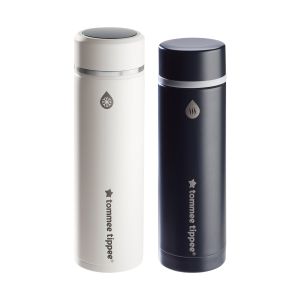
This is a demo store. No orders will be fulfilled.
Subscription orders can be cancelled at anytime. Free delivery on all subsequent subscription orders. Find out more about subscriptions.
They’re easy and fuss free
Your products are automatically sent to you
You save up to 10% when you sign up for a subscription
You can cancel at any time
The truth is, clogged milk ducts can be painful and uncomfortable. If they���re not dealt with promptly, they can lead to a complication called mastitis ��� localised���swelling���and���inflammation of the breast that's triggered if a���blocked���duct���isn't cleared. ���
If you're breastfeeding and concerned about blocked milk ducts, try not to worry, there're a few ways to relieve them! This guide is here to help you understand what causes blocked milk ducts and to let you know what you can do about them.
Narrow tubes called mammary ducts carry breast milk from the segmented glands (lobules) in the breasts to the nipple. If one of the glands isn't drained properly as a baby feeds, the���milk���can't flow���through���easily, and the ducts can become blocked.
Blocked ducts can happen if:
Let���s run through the symptoms of a blocked milk duct and what to look out for. Some common signs and symptoms include:
First and foremost, you must get plenty of rest, eat well, and stay hydrated, even if you're feeling under the weather. A clogged duct is unlikely to fix itself without intervention, but there are a few techniques you can try to unclog milk ducts and relieve the pain they cause.
You can tell that a blocked milk duct is cleared if you can no longer feel a lump, and you may see extra thick breast milk come out while you're pumping or hand-expressing.
If the blockage hasn���t cleared after a day or two, or you notice that your symptoms are getting worse, there may be a risk of developing mastitis, so don���t hesitate to contact your GP.
The symptoms of mastitis are:
Blocked ducts are very common, but if you're just beginning your breastfeeding journey, these tips on how to help prevent milk ducts from becoming clogged in the first place may come in handy.
To reduce the risk try to:
Let���s cover some answers to the most common questions that parents ask about blocked ducts when breastfeeding.
Yes, pumping more often, alongside maintaining your usual breastfeeding schedule, can help relieve clogged ducts. Expressing breast milk encourages it to flow, which can help to remove the blockage.
Yes, ibuprofen or paracetamol are safe to take while breastfeeding and can help to reduce inflammation and manage pain.
It���s always a good idea to check with your GP or midwife before taking any medication while breastfeeding, and it���s also important to note that people who are breastfeeding shouldn���t take aspirin.
If you're struggling to unclog a blocked duct, don���t be tempted to try and pop it because this can lead to a higher risk of infection.
If none of the recommendations we've listed above work for you, you should seek medical help from a doctor or midwife to reduce the risk of the clogged duct leading to mastitis.